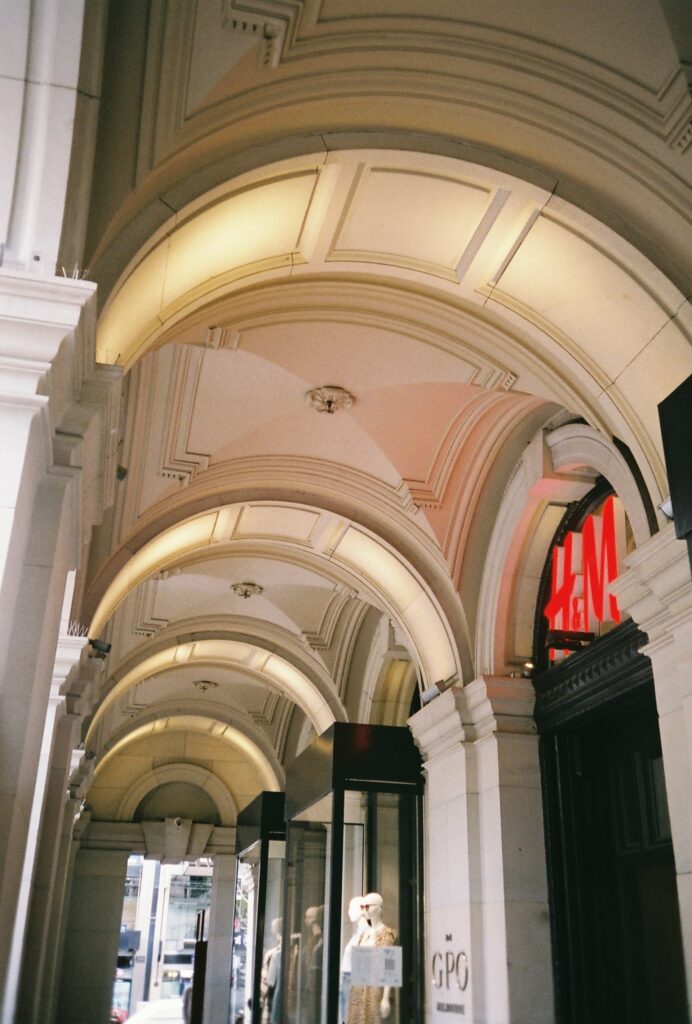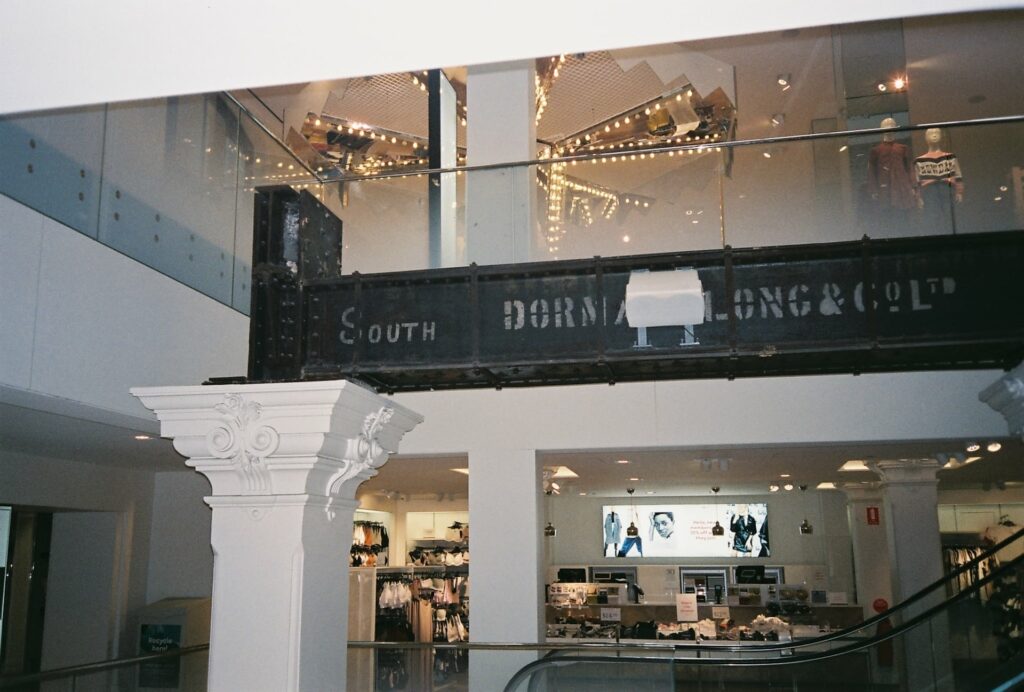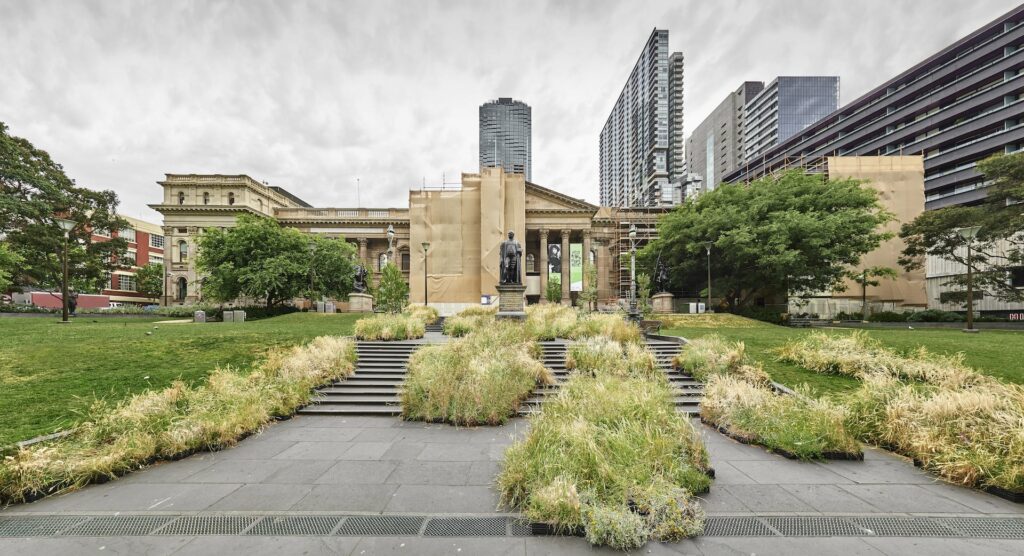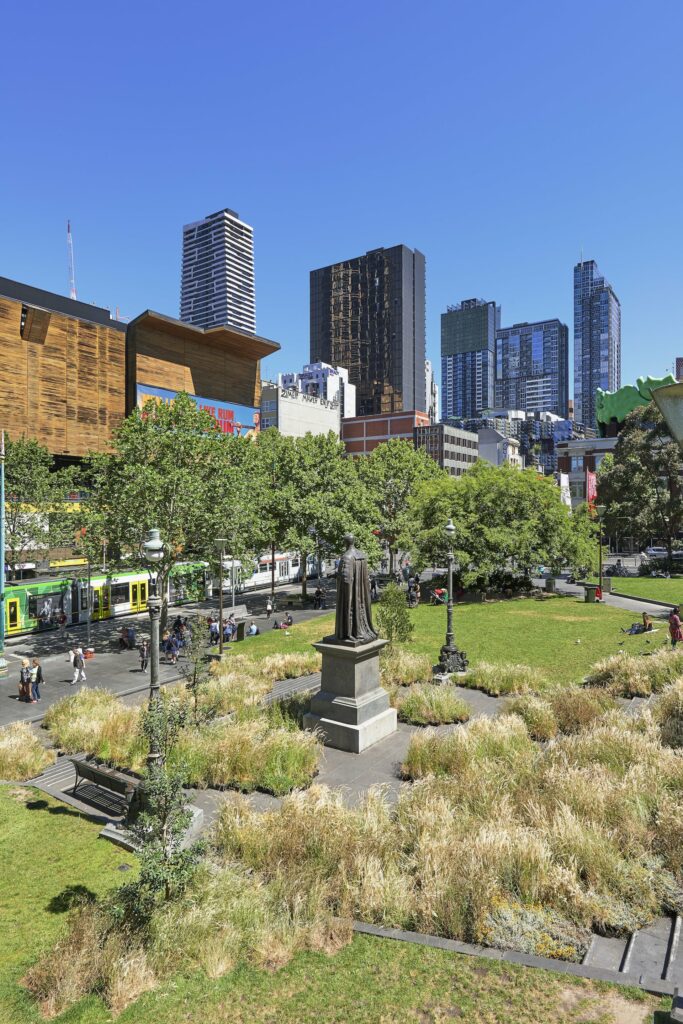

photo: Ursula Cornelia de Leeuw
The library and the department store: the house of knowledge and the house of consumption. Upon closer inspection, they are modern temples where the communal ritual of excess expenditure takes place. Such sites have existed, with many different faces and many different names, for as long as the sacred has been practised. In other words, for all eternity. For Georges Bataille, the sacred pertains to life’s endless excess which constantly disturbs profane orders of work, productivity and reason. The sacred is both material and spiritual, insofar as mysticism is inherent to matter, bodies, structures, lands and objects that lie beyond thought.1 As the library and the department store reveal the endurance of the sacred beneath modernity’s ‘secular’ industry, they do so in the form of a Rabelaisian image. Here, what is simultaneously passing away, and coming into being, shines through structural layers. It is a continuously transforming intensity of that which cannot be contained.
As Mikhail Bakhtin explored in his study of Francois Rabelais, the ‘Rabelaisian image’ lives between the literary imagination of the West and the ‘lower stratum’ of the body. Through narrative and its evocation of sensuous form, the Rabelaisian image captures the hilarious and the grotesque, the crude and the carnivalesque. Following the tradition of folk humour and its playful imagery, Rabelais opposed the strict ecclesiastical and feudal nature of medieval culture. In this way, Rabelais’ images evoke the ritual of collective laughter, where one is freed from fixity in an abundant, festive atmosphere.
As Bakhtin writes:
Rabelais’ images have a certain undestroyable, nonofficial nature.
No dogma, no authoritarianism, no narrow-minded seriousness can coexist with Rabelaisian images; these images are opposed to all that is finished and polished, to all pomposity, to every ready-made solution in the sphere of thought and world outlook.2
Rabelaisian images are found amongst rigorously structured atmospheres that, as towers built toward an ideal atop an ever- shifting base, necessarily prepare their downfall. They are inherent to the city, the crowd, the marketplace, the fairground; sites of communal re-appropriation where things are constantly changing, but also eternal as they perform the ritual of transformation in its many forms. As it leaps from the page, the Rabelaisian perspective wells up in an image signifying the dying of the old, and the birth of the new, as they are always simultaneously performed. In this way, Rabelais and his laughter echoes throughout history to dispel myths of authenticity, authority and linear time. Thus, a Rabelaisian image is never complete, but is the recognition of eternal returns and overflowing desires. As I take a walk around the city of Melbourne, I see a Rabelaisian image in the neoclassical shell of a library and a department store.
At the corner of Elizabeth Street and Bourke Street, Melbourne’s H&M store is housed in the old General Post Office (GPO). The bold nineteenth-century building comprises three rows of pedimented windows, a spired clocktower and a surrounding arcade. A stylistic conglomeration of pier and pilaster columns layer its exterior, with Tuscan columns on the first floor, Ionic on the second and Corinthian on the third. While climbing the building’s tiered steps, the arcade begins to resemble a cathedral as one walks beneath its groin vaulted ceiling.
Upon entering the store, one immediately confronts a plaque to The Glorious Dead, passing through to the sprawling terrace foyer. It is decorated with fake leafy ornaments, modish gold chandeliers and a coat of blinding white paint. An iron beam sits atop an ornate classical column. Here, Walter Benjamin’s Arcades Project comes to mind, where the iron of nineteenth-century Paris was a new industrial invention and yet was used to mimic the Pompeiian columns of the past: ‘Construction plays the role of the subconscious.’3 It is easy to get trapped on the highest floor of the store as the upward escalators flow centrally, while those downward are tucked away to the side. One may continue to travel toward the glowing grid of the building’s skylight, surrounded by neon white quotes: ‘FASHION NEVER SLEEPS, SO NEITHER DO WE.’
The neo-classical columns of the post office are repeated at the State Library of Victoria on Swanston Street. Taking on many re-developments over time, the most iconic components of the library are the pillars of the forecourt, and the Dome that sits atop it. Beneath the oculus of the Dome is an Edwardian reading room, enclosed by a series of galleries that swirl with embossed script. One banner quoting the author Arnold Zable reads: ‘The Dome and its ascending galleries seemed like a giant brain vaulting towards the heavens.’ Leafy fleurettes are draped across each balcony in decorative wreathes. A garden, set in stone, is admired from a series of period-style desks that encircle the central observation dais. Accessible via the Dome’s stairs, made of white Sicilian marble and grey Buchan limestone, are the rituals of the forecourt where groups gather in the divine presence of the library.


Grasslands, 2014
photo: Matthew Stanton
In 2014, artist Linda Tegg transformed the library in her installation Grasslands. Here, native grasses were installed on the library steps, surrounding the collection of bronze monuments that guard its walls. Tegg combined Victorian architecture with indigenous flora in a time-travelling feat whereby the practices of nature join with humankind’s house of knowledge. Spilling its inner workings into the forecourt, Tegg relied on the archive of the library (specifically, early settler documents) to research the species of plants that once grew there.4 As such, a colonial picture is harvested from rare botanical books, illustrated maps and Heidelberg school paintings, brushing against the style of garden living inhabited by the Edwardian leisure class. Kangaroo and wallaby grasses, as well as chocolate lily flowers, lemon beauty-heads and billy buttons bristle against the statue of Sir Redmond Barry. However, seeing through newly settled eyes forges a dangerous relation with the exotic. What has been built upon endeavours its inevitable return. The irrepressible pushes through the gaps between sturdy white columns, and the field of knowledge reveals itself as dense bush scrub. As Tegg overlays what is assumed to be ‘old’ and ‘new’, the myth of linear time faces its destruction. The exterior, monumental appearance of the library, as well as its interior archive, are overgrown by the rituals of the site’s ecosystem. Sacred excess persists through time and space, like wild grass sprouting from concrete.
In ‘Capitalism as Religion’ Walter Benjamin recognised the absence of myth that is the true myth, the death of God that is modernity’s covert re-incarnation of it: ‘Capitalism is a religion of pure cult, without dogma.’5 Benjamin goes so far as to say that the operations of capitalism exhibit the most extreme form of occultism to ever have existed. Within the phantasmagoria of the shopping mall or the arcade there are ‘no weekdays’, only constant festivities in which ‘things only have a meaning in relation to the cult’.6 Benjamin remarks that the pervasiveness of guilt beneath the God of capital reaches the point where ‘the universe has been taken over by that despair which is actually its secret hope’.7 Hope is central to Benjamin’s inherent messianic mysticism, where the transformative desire for revolution lies beneath the images of collective desire. These images are distributed at an accelerating rate by the mechanisms of mass production and the detritus it litters around the city.
In fashion, style embodies a non-linear, historical memory through retroactive wish-images. It is the operation of fashion itself to simultaneously reference the past, re-create the present and innovate the future. Thus the images of technological reproduction proliferate the ebb and flow of the new and the outmoded, creating a mass of collective consumption: ‘Fashion as means of communicating commodity character to the cosmos.’8 The commodity is the central relic of the cult; an icon of veneration that connects its recipient to God. The commodity creates both guilt and happiness. It creates both despair, as one is indebted to the system of exchange, and the hope of awakening the commodity’s dream-image of utopia that, like a sacred wish, has worn many masks across history. In a Rabelaisian fashion, the contradictory yet symbiotic impulses of life and death persist in the meagre, yet explosive, objects of the department store.
With a Rabelaisian eye, the city is perceived from the point of its collapse. The assumed dignity of the neoclassical tradition is bloated by the mystic activity it innervates. As Tegg shows us, the decadence of its garden inevitably overflows. The monumental structure of the State Library becomes formless. Like children playing among ruins, it remains fertile ground for the rampancy of feverish students, passers-by and people who seek its shelter. Bodies gather in a frenzied exchange on its lawns, but also doze off in the safety of its bowels. Their mouths hang open, left to dream in the space between sleeping and waking — between work and rest, productivity and its sacrifice. The GPO crumbled the moment H&M occupied its interior. Thus, its significance as a community centre for trade and transmission appeared to pass. Yet the new takes on meaning in the rubble of the old, as the old returns with new life. The desire for communication persists in the building’s venerate material. As one walks around the city, the rituals of the library and the department store spawn a sequence of Rabelaisian images, where everything has lived a thousand births and a thousand deaths in the space of a single moment.
